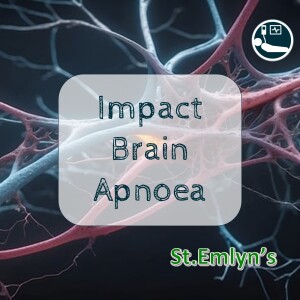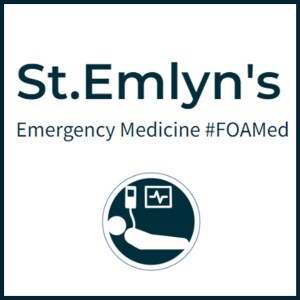
Today, we delve into a fascinating and crucial topic in trauma care: impact brain apnoea. We recently had the privilege of attending the London Trauma Conference and caught up with Dr. Gareth Davis, a leading figure in trauma care and pre-hospital emergency medicine in the UK. Dr. Davis shared his insights into impact brain apnoea, a phenomenon that, while not widely recognized, has significant implications for patient outcomes.
The Unseen Danger: What is Impact Brain Apnoea?Impact brain apnoea refers to a sudden cessation of breathing due to a blow to the head. This phenomenon, although not commonly discussed, has been a subject of intrigue for trauma professionals for many years. Dr. Davis explained that this condition occurs when an impact to the brain stem interrupts normal breathing, potentially leading to severe consequences if not promptly addressed.
This condition's significance lies in its subtlety and the challenges it poses in pre-hospital care. Many trauma incidents involve high-impact forces, such as car accidents, where a patient may suffer head injuries. Understanding the mechanics behind impact brain apnea can be the key to differentiating between minor and severe trauma cases, potentially saving lives.
The Historical Context and Research ChallengesThe concept of impact brain apnoea isn't new, but it has been challenging to prove and widely accept due to a lack of concrete evidence. Gareth emphasized that the inconsistency in patient outcomes—where one individual might suffer severe consequences while another escapes with minor injuries—sparked curiosity among trauma specialists. Over time, through a combination of clinical observations and literature reviews, the medical community has started to piece together a more comprehensive understanding of this condition.
A significant barrier in researching impact brain apnoea is the timing of medical intervention. Most pre-hospital care teams arrive at the scene minutes after an incident, often too late to observe the initial apnea phase. This delay makes it challenging to gather real-time data, leaving a gap in understanding the immediate physiological responses post-trauma.
Physiological Mechanisms: The Dual ThreatDr. Davis highlighted two critical physiological responses following a head injury that contributes to the complexity of treating impact brain apnea: the immediate cessation of breathing and a subsequent catecholamine surge.
-
Apnea and Hypoxia: The primary response is an apnea caused by the impact on the medulla oblongata, the brain's breathing control centre. This apnea leads to hypoxia (low oxygen levels) and hypercarbia (increased carbon dioxide levels), which can quickly deteriorate the patient's condition.
-
Catecholamine Surge: Following the initial apnea, the body releases a significant amount of catecholamines—hormones like adrenaline—that flood the system. This response, while a natural reaction to stress, can be detrimental, especially when the heart is already struggling due to hypoxia. The combination of these factors can lead to traumatic cardiac arrest, a situation where the heart fails due to trauma-induced physiological stress rather than direct injury.
Understanding these mechanisms is crucial for emergency responders. Recognizing the signs of impact brain apnea and addressing them promptly can be the difference between life and death.
The Clinical Conundrum: Diagnosing and Treating Impact Brain ApneaOne of the most challenging aspects of dealing with impact brain apnea is the clinical presentation. Patients may not exhibit obvious signs of severe trauma, such as external bleeding or visible injuries, making it difficult to diagnose based solely on physical examination. Gareth discussed the importance of thorough history-taking and observing indirect signs—akin to observing the "echo" of a particle, like in the Higgs boson analogy.
The lack of direct evidence means clinicians often rely on a combination of observational data, patient history, and situational awareness. For example, if a patient presents with persistent hypotension without a clear source of bleeding, clinicians might consider central shock—a term used to describe shock due to central nervous system dysfunction rather than volume loss.
The Role of Public Education and Pre-Hospital CareGareth emphasized the crucial role of public education and pre-hospital care in managing impact brain apnoea. The public's ability to provide immediate aid, such as opening an airway and administering ventilatory support, can significantly affect outcomes. He pointed out that while there is a global trend to focus on chest compressions in cases of cardiac arrest, for patients with traumatic injuries, addressing airway and breathing is paramount.
In London, initiatives like the GoodSAM app are helping bridge the gap by connecting trained responders with emergencies in real-time. This app allows people with medical training to provide critical first aid before professional services arrive, potentially mitigating the effects of impact brain apnea by ensuring the patient's airway is open and they are breathing adequately.
Navigating the Future: Research and EducationThe conversation with Dr. Davis also highlighted the future directions for research and education. The medical community needs to invest more in understanding and validating the concept of impact brain apnea. This investment includes funding for clinical studies and fostering an environment where healthcare professionals can share their observations and experiences.
Podcasts, blogs, and medical conferences are valuable platforms for disseminating information about new medical phenomena like impact brain apnea. Dr. Davis encouraged medical professionals to remain curious, continue their education, and be open to emerging concepts that may not yet have robust evidence but have practical significance in clinical settings.
Key Takeaways and Clinical Pearls-
Recognition and Belief: Clinicians need to recognize and believe in the concept of impact brain apnea. Even if direct evidence is scarce, understanding the physiological mechanisms and potential clinical presentations can guide effective treatment.
-
Focus on Airway and Breathing: In cases of traumatic injury, especially with suspected head trauma, the immediate focus should be on ensuring the airway is clear and the patient is breathing. This intervention can prevent the cascade of negative physiological responses that lead to traumatic cardiac arrest.
-
Role of Bystanders and First Responders: Public education and the involvement of trained responders are critical. Tools like the GoodSAM app can play a significant role in ensuring timely intervention.
-
Continuous Learning and Adaptation: The medical field must remain adaptive, incorporating new research findings and adjusting treatment protocols as more is understood about conditions like impact brain apnea.
Impact brain apnoea is a critical yet under-recognized phenomenon in trauma care. Through continued research, education, and public awareness, we can improve patient outcomes and provide better care in pre-hospital and clinical settings.
More Episodes
Create your
podcast in
minutes
- Full-featured podcast site
- Unlimited storage and bandwidth
- Comprehensive podcast stats
- Distribute to Apple Podcasts, Spotify, and more
- Make money with your podcast
It is Free
- Privacy Policy
- Cookie Policy
- Terms of Use
- Consent Preferences
- Copyright © 2015-2024 Podbean.com






